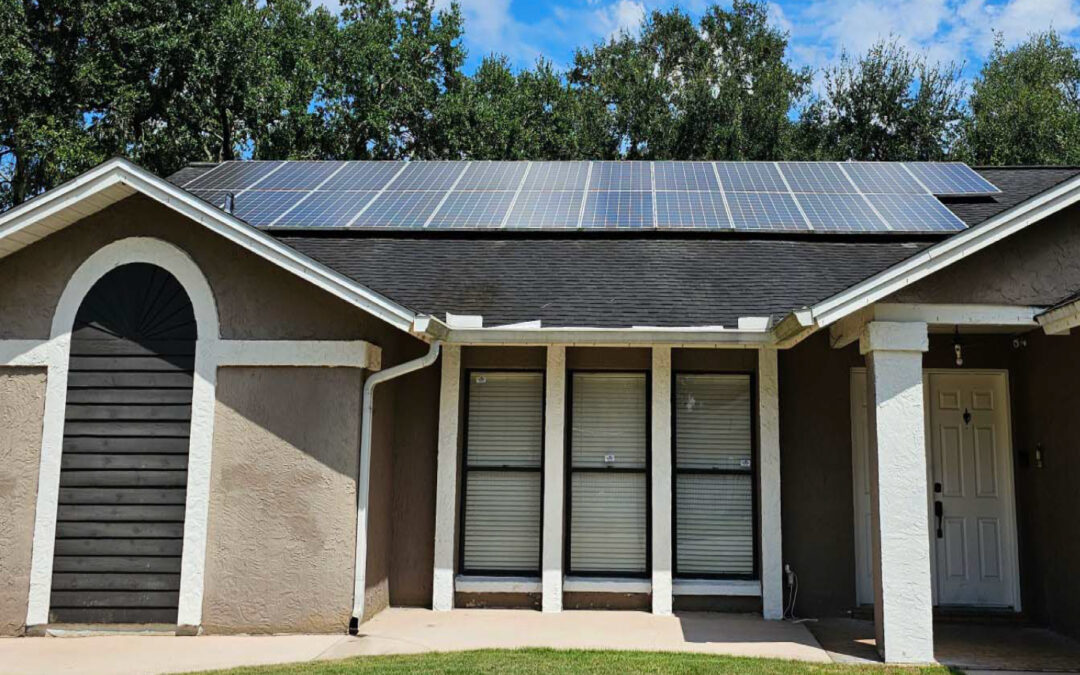Few vehicles have disrupted the automotive industry as much as the Ford Model T — the world’s first mass-produced, affordable automobile.
When the Model T was first introduced in 1908, it was new technology that virtually ended the horse-and-buggy era; Ford sold over 15 million Model T cars in nearly two decades, and the Model T became recognized as the most influential car of the 20th century.
But recently, Tesla introduced a car that totally disrupts all current gas powered engine technology: the Tesla Model S Plaid.
Learn what makes the Model S Plaid a game changer, and what the new model means for the shift to electric vehicles and solar power:
What is the Tesla Model S Plaid?
The Tesla Model S Plaid is a four-door, fully electric vehicle with over 1,000 horsepower that goes zero to 60 mph in just over two seconds.
The Plaid can hit the quarter-mile in nine seconds, going over 160 mph.
YouTube is awash with videos of the Tesla Plaid solidly beating all of the fastest gas-powered production cars on the planet, including Lamborghinis, Ferraris, and upgraded Corvettes. Simply put, the new Plaid makes the fastest gas-powered supercars look, well, slow in comparison.
The Plaid even beats the fastest gas-powered motorcycles, including the Suzuki Hayabusa and the Kawasaki ZX-14. Until the Plaid was released, motorcycles have always been faster than any car on the planet, mainly because they have a better power-to-weight ratio.
But this is no longer the case.
It’s easy to feel like Elon Musk was very intentional about this; he wanted to prove that gas-powered engines are really the “horse-and-buggy” equivalent of our modern times. Musk knew that his customers would race the Plaid against all the fastest gas-powered sports cars out there — and he knew the Plaid would win, hands down.
The Plaid performance numbers drive the final nails in the coffin of gas-powered supercars everywhere: Why spend $1.2 million on a Bugatti with a V-12 engine when you can buy a Plaid for $150,000 and still outperform the Bugatti?
The Model S Plaid and the Electric Vehicle Movement
Sure, consumers will still buy gas-powered cars for the next few years — but electric cars will continue to get faster as energy density increases in batteries and electric motors continue to improve.
While the Plaid is making gas-powered sports cars obsolete, the new Ford F-150 Lightning is going to make gas-powered pickup trucks look like yesterday’s technology.
Slated for release in spring 2022, the F-150 Lightning already has over 150,000 reservations. It’s easy to assume that Ford will not only sell every single Lightning they can produce, but also have backorders for more.
75% of those 150,000 reservations for the new Lightning are buyers who have never purchased a Ford product previously. As of October of 2021, Ford Motor invested an additional $250 million dollars in the production budget for the new F150 Lightning.
The least expensive, all-electric F-150 Lightning will retail at $39,000. However, buyers will get an additional $7,500 tax credit when they buy new, so the real cost of the base model is $31,500.
Both the Tesla Plaid and the Ford Lightning will bring electric cars to the masses, so buyers who didn’t find the Prius appealing might test drive the Tesla or the Ford and decide to switch.
Another benefit — which ties into rooftop solar — is the Lightning’s capacity to act as a battery backup in case of a power outage.
The extended range Lightning comes with a 155 kWh battery. This means that if a homeowner combines a Ford Lightning with rooftop solar panels, they can build a system that can handle a total grid shutdown, even if that shutdown goes on for weeks at a time.
In comparison, the Tesla Powerwall is 13.5 kWh per Powerwall, so the 155 kWh battery in the Ford Lightning is roughly equivalent to having 11 Tesla Powerwalls installed in your home!
We are predicting that by 2030 most homes will have rooftop solar and limited home based energy storage, combined with additional storage capacity from any electric vehicle plugged into the home.
The traditional power grid might eventually become a tertiary back-up, used primarily for larger industrial applications. If every home produces and stores energy easily there is less need for a centralized power source.
Solar in Florida can produce power even on cloudy days, so if enough panels are deployed everywhere, and if that extra energy can be easily stored… no more blackouts and brownouts.
Building the Case for Solar Panels & Electric Vehicles
Over the next decade, there will be many affordable electric cars on the market with a range that exceeds 300 miles. Given their availability, expect to see many two-car households with at least one plug-in electric vehicle.
And as more electric cars get plugged into the grid, demand for electricity will soar, possibly driving up the price-per-kilowatt that consumers will have to pay — unless they install rooftop solar panels and generate energy from the sun.
If you buy rooftop solar panels and charge your electric vehicle at home, you will save money in two ways: Reducing gasoline costs and lowering your electric bill.
Once your solar panel array is paid off, your fuel for transportation is effectively free for the 40-year lifespan of your solar panels.
Ask yourself: How much are you spending each month for gasoline? Now imagine applying that money to pay off your solar panel array loan instead.
If your rooftop solar panels reduce your electric bill by $200 per month — and driving an electric car saves you $100 per month in gasoline costs — that’s $300 per month, $3,600 per year, and $36,000 saved over the next decade. If you have a $20,000 solar panel array, that means a fast ROI…and an increase in home value.
And if the Tesla Plaid exceeds your budget, there are plenty of other options: Many affordable electric vehicles will hit the market in the next few years, and some of those electric vehicles will be sold as used cars at an even lower price point. For example, several Tampa Bay Solar team members have purchased used electric vehicles for under $20,000.
How Tampa Bay Solar Can Help
Electric vehicles require a 240-volt outlet to charge fast, so Tampa Bay Solar has been installing these outlets in garages all over Tampa Bay. And if you buy rooftop solar panels from Tampa Bay Solar, the team installs these for no additional charge.
Not sure how many additional panels you’ll need to power your electric vehicle? That answer depends on your daily mileage, the type and model of your electric vehicle, and your driving habits. The best way to assess power usage of any electric vehicle is to own one for 60 days, then analyze the power used in that time span.
Whether you own an electric vehicle yet or not, everyone can benefit from installing solar rooftop panels and charging outlets. Contact Tampa Bay Solar today, to discuss your energy needs and kickstart your free energy audit!




